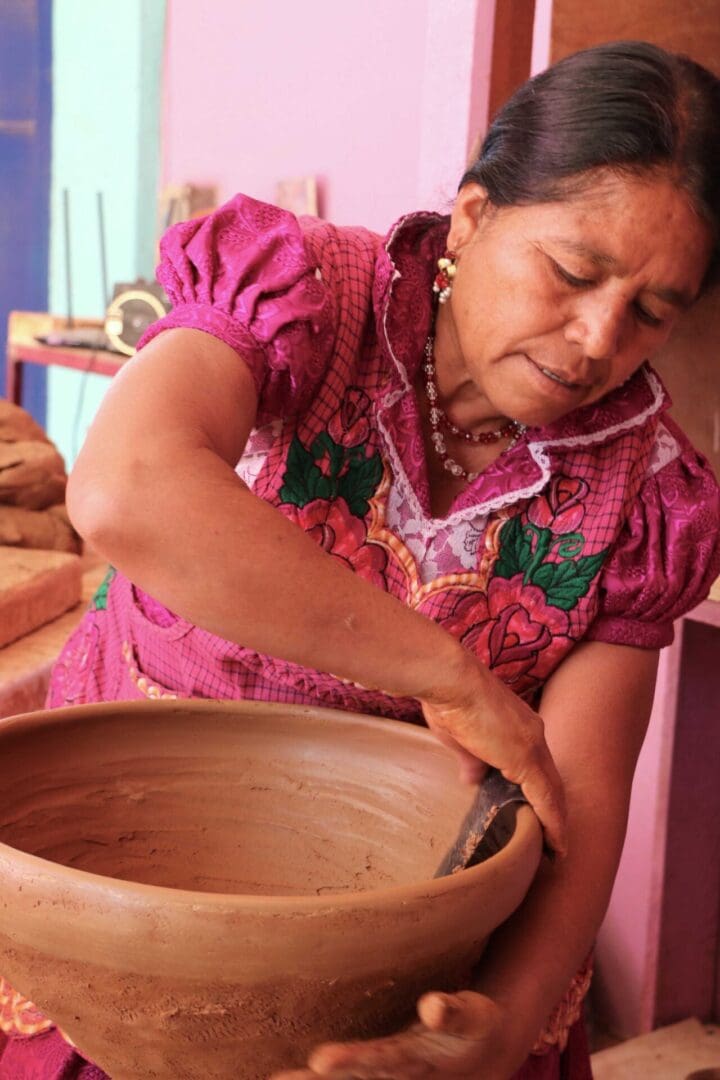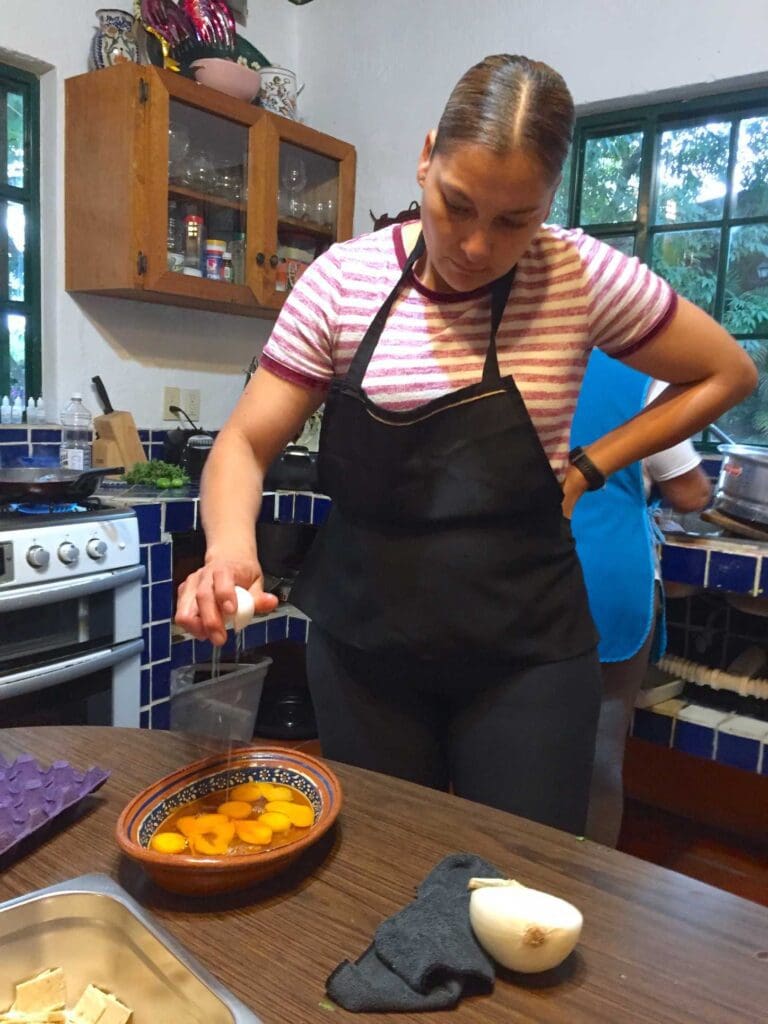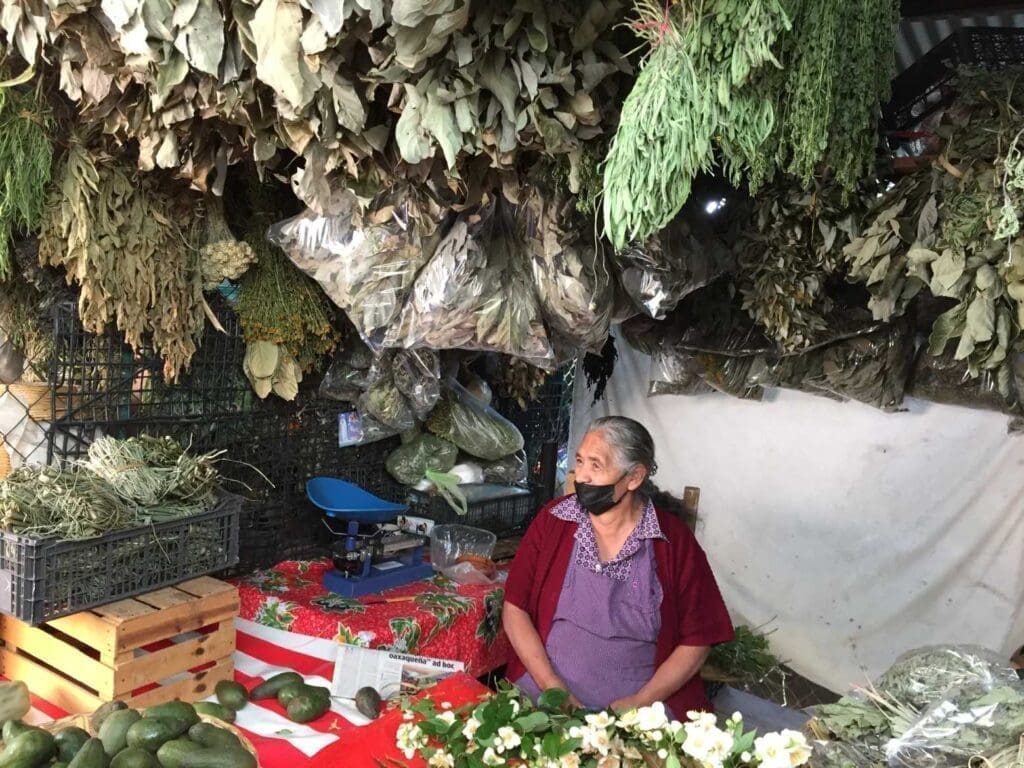
TRES MUJERES (Three Women)
I have returned to Mexico for the second time, welcomed back as an old friend, or distant family member. Almost everywhere I go, I am greeted by a smile or a friendly buenos dias, the warmth of the people as soothing as the hot chocolate I crave. As I go from city to town to village, I am mostly struck by the women I encounter. Whether behind a hot stove cooking chilaquiles, or firing hand-made clay pots, or simply selling wares at a market, these women work long hours to support themselves and their families. And they do so with pride and with grace. I can feel their estrogen levels permeating their spaces, men only seeming to have minor roles in their magical enterprises, useful only if stuff needs to get fixed. They are in charge, whether by choice or by happenstance.
In Tlacolula, Macrina Mateo Martinez carries on her family’s tradition of creating utilitarian burnished terracotta pottery using pre-Columbian techniques. I watch her shape a 10” bowl with her bare hands, slapping it as if it just told her something she didn’t want to hear. Not looking up from her work, she explains how she and her sisters dig the clay out from the nearby El Picacho mountain, then carry it home on their backs. The work seems arduous and exacting, but her pieces have traveled the world. As a teenager, wanting to rebel against the constraints of her family, she traveled outside of her village to learn how to find new markets. For a while, those home ostracized her, until it was clear that she could help the village thrive. Since then, she has founded a women-led cooperative known as the Mujeres del Barro Rojo (women of the red clay) and her work has even found a spot at MOMA in New York. Except for a spiffy new kiln, she keeps the same generations-old traditions and techniques alive today.

Just outside of Guadalajara, in a small village, Fabiola is having her way with a pot of salsa verde. Cooking for a local family for the past fifteen years, she can whip up a meal for ten in less than a half-hour. And it’s always good, really good. Her sopa de nopales, chalupas, quesadillas, and my favorite, chilaquiles never disappoint. I had the good fortune to come here on a writers’ retreat a few years back and had my first exposure to her food. Knowing I was returning this year, I spent a few months slaving over Duolingo so I could at least tell her in Spanish how much I enjoyed her food, with hopes of getting a recipe or two. As I started to speak, she nodded, too busy to try to understand what the hell I was saying. Nonetheless, I watched and did get her chilaquiles recipe.

Down in Oaxaca at the Mercado de Abastos, I was enchanted by an old woman selling herbs. She sat quietly on her stool, surrounded by huge bunches of basil, mint, and laurel. Her eyes crinkled beneath her mask as she smiled towards me. I wondered how many hours she has sat here, how many days, how many months, how many years? She motioned for me to smell the herbs, to inhale the land and fields she must have toiled in to bring them here. Each was pungent and intense, like the food they will one day season.
I feel connected to these women, as if we have a universal sisterhood without needing words. As we look into each other’s eyes, we can feel our stories of love, work, family, heartbreak and joy. We know. We just know.
